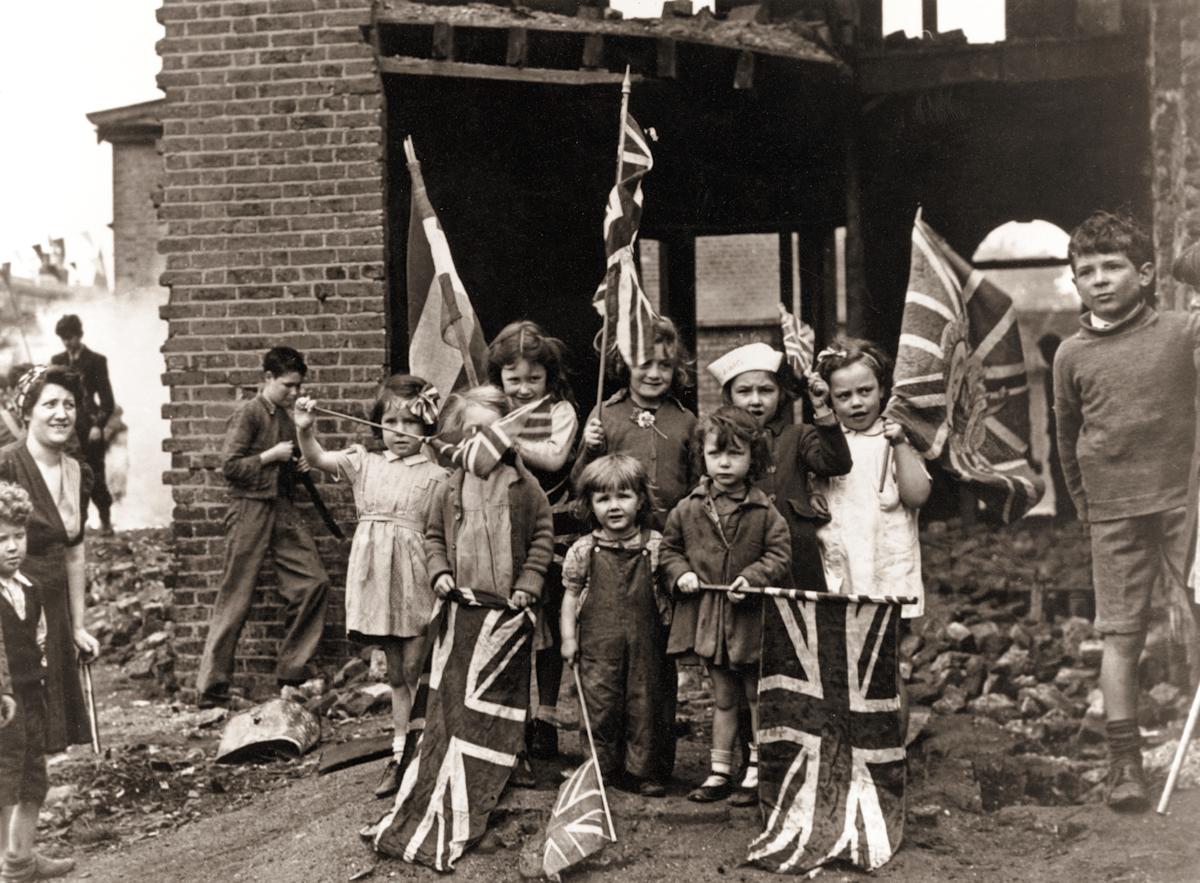The UK is celebrating the 80th anniversary of VE Day with official events, flypast, street parties and commemorative concerts taking place across the UK.
During four days of celebrations and pageantry for VE day, or Victory in Europe Day, the UK has been marking the 80th anniversary of the end of the Second World War in Europe.
Thousands of events have been taking place across the UK on public streets but also at special landmarks like Stonehenge, which will play host to beacon lightings, and the Tower of London, which has an art installation of 30,000 ceramic poppies.
Read more: The VE Day 2025 celebrations near you and how to get involved
VE Day celebrates the formal acceptance by the Allies of Germany’s unconditional surrender of its armed forces on Tuesday, 8 May 1945.
Brits were told over radio broadcast on 7 May that the war in Europe had ended and VE Day would be a national holiday that would take place the next day. The Second World War formally ended on 2 September 1945, when Japan signed formal surrender documents.
So, as millions of Britons commemorate that historic moment today, Yahoo News’s photo series below looks back 80 years at what life was like in 1945 Britain – and how the country celebrated the end of war.
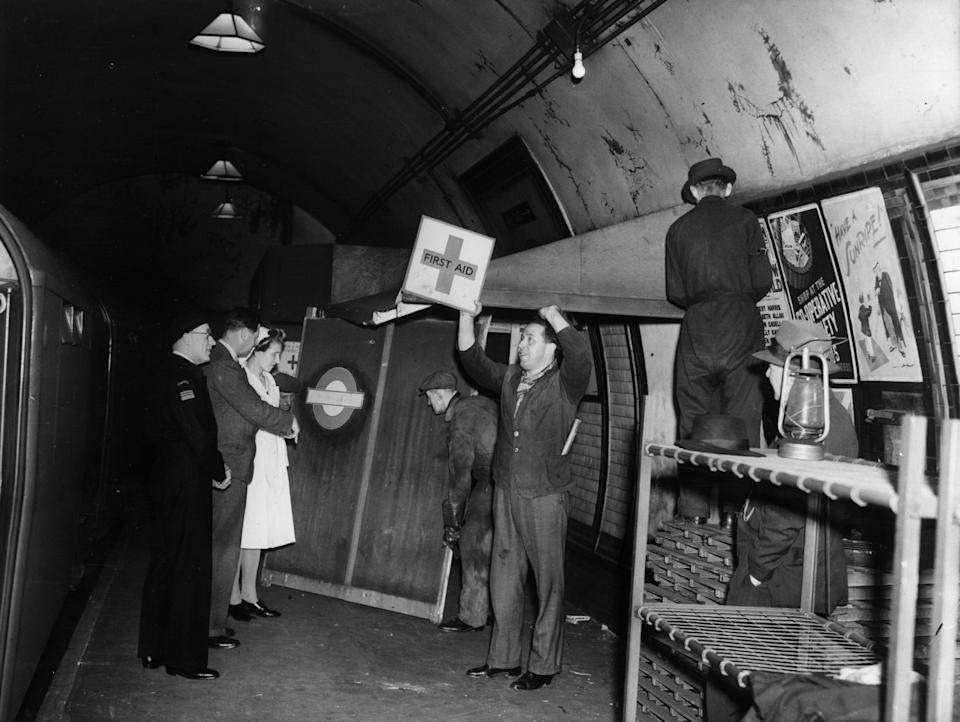

The demolition of one of the remaining shelter bunks in a London underground station at the end of the Second World War. (Getty Images)
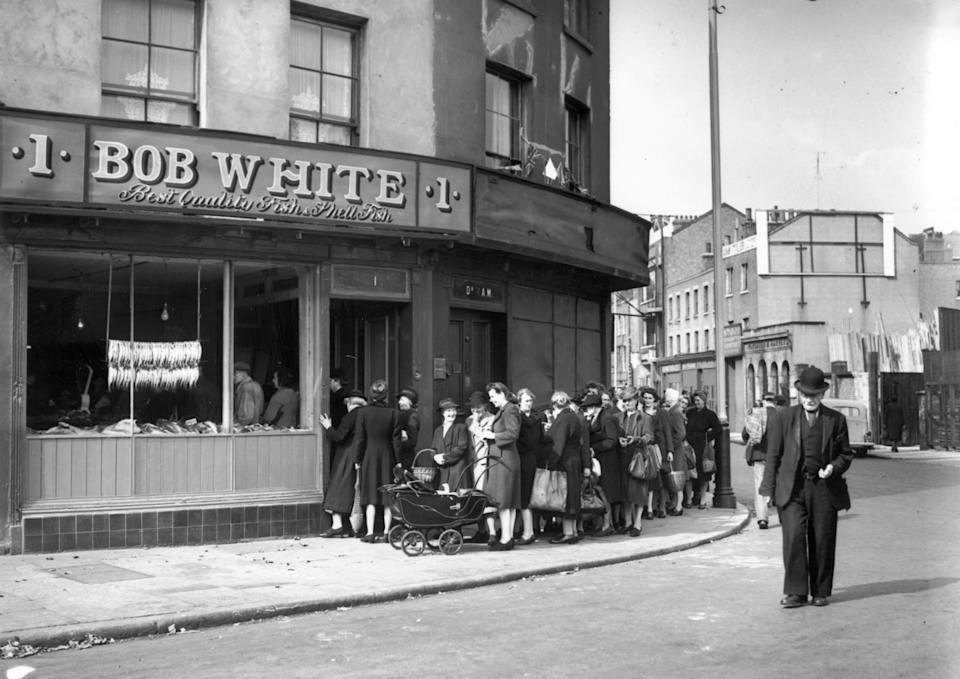

Although the war in Europe ended in May 1945, rationing of many products continued for years. And even though some items, such as fish, were not rationed, their availability and price were affected by the war. Here people queue outside a fishmongers at Elephant and Castle, south London, on 17 August 1945. (Getty Images)
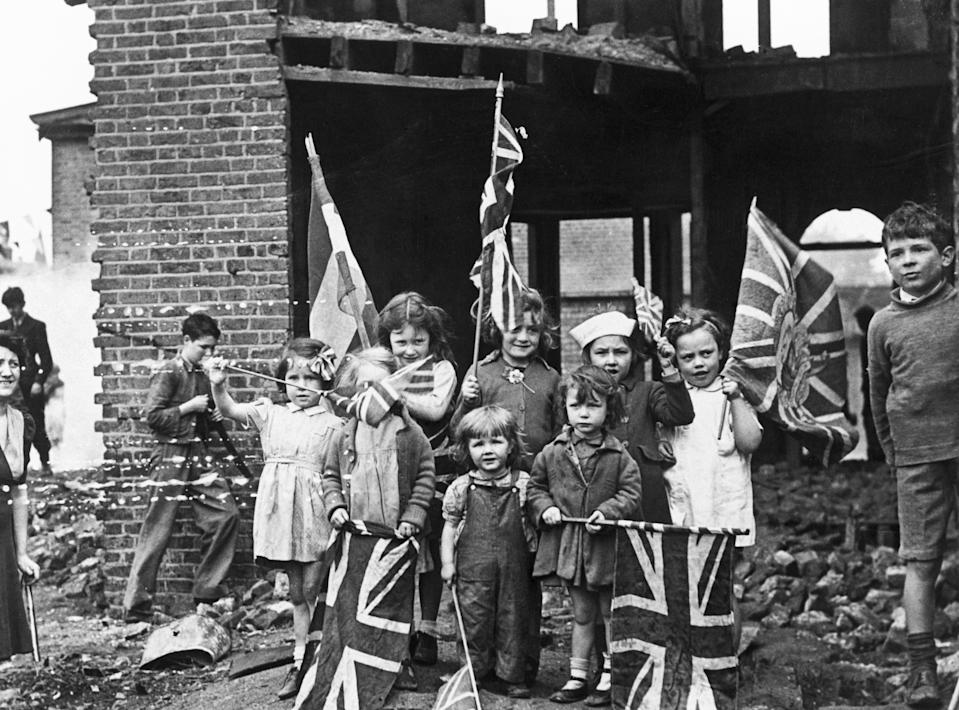

London was bombed more heavily and more often than anywhere else in Britain during the Blitz, with many homes left damaged and destroyed. In bomb-scarred Battersea, south London, these children celebrated VE Day among the ruins of their homes. (Getty Images)
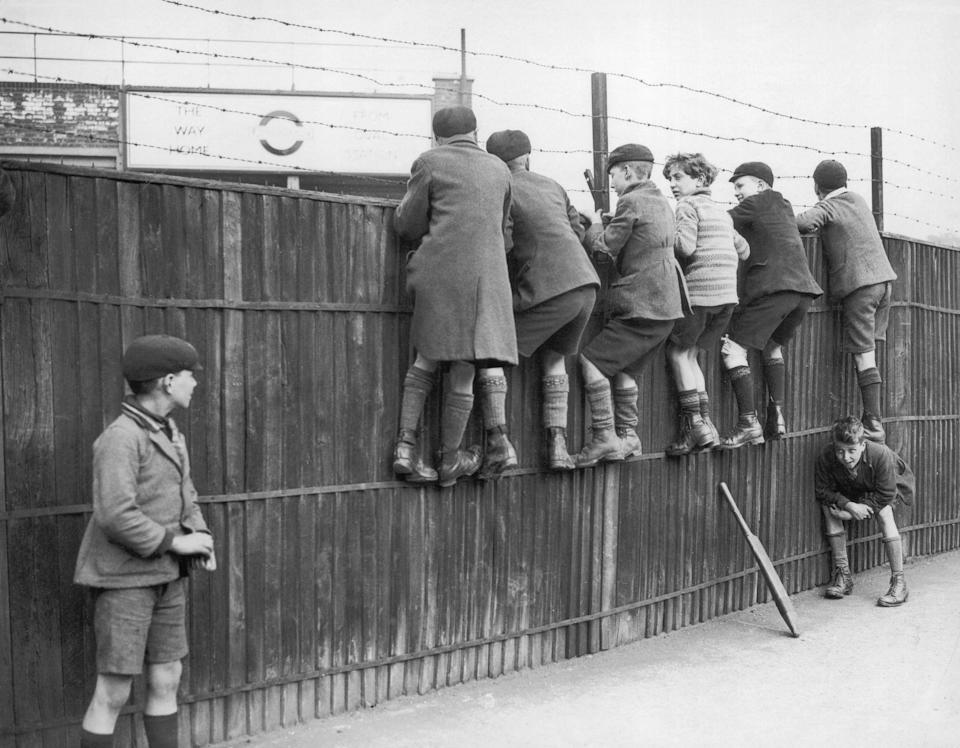

Schoolboys clamber up a fence at Oval in London to watch a cricket match. Many sports were halted during the war, with first-class cricket cancelled from 1940-44. This is likely the first time these children would have seen a match at this stadium. (Getty Images)
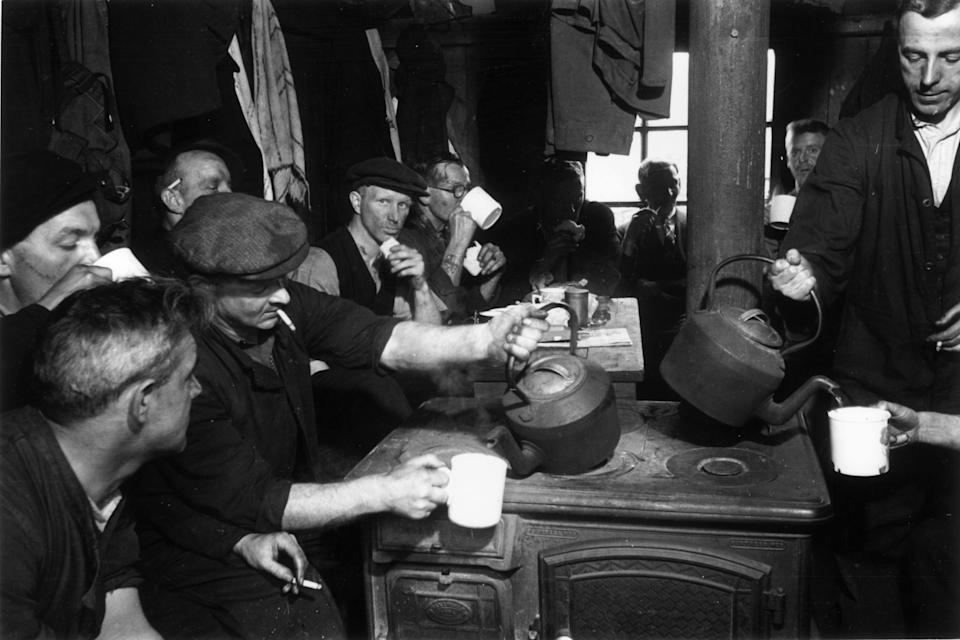

The ‘tunnel rats’, a group of maintenance men who kept Britain’s railways in working order, enjoy a tea break on 20 October 1945. Britain’s Victorian rail network was heavily relied upon during the war, needing a large workforce to maintain. (Getty Images)
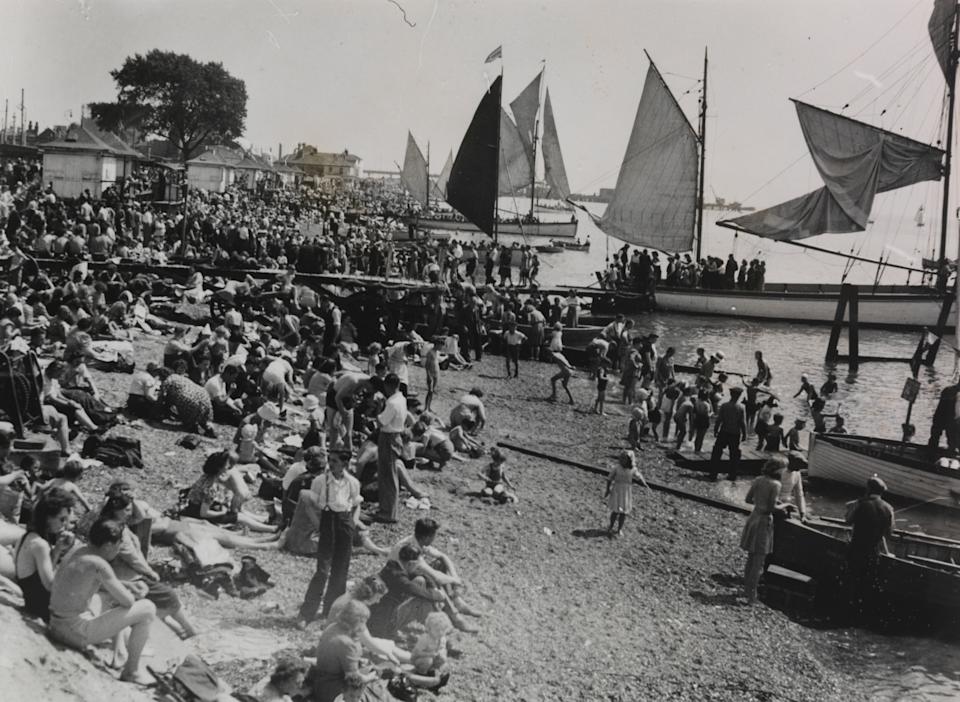

Essex was targeted regularly by bombing raids due to its proximity to London and large coastline. Here, crowds of holidaymakers gather on the beach at Southend-On-Sea during the August holiday, 1945. (Getty Images)
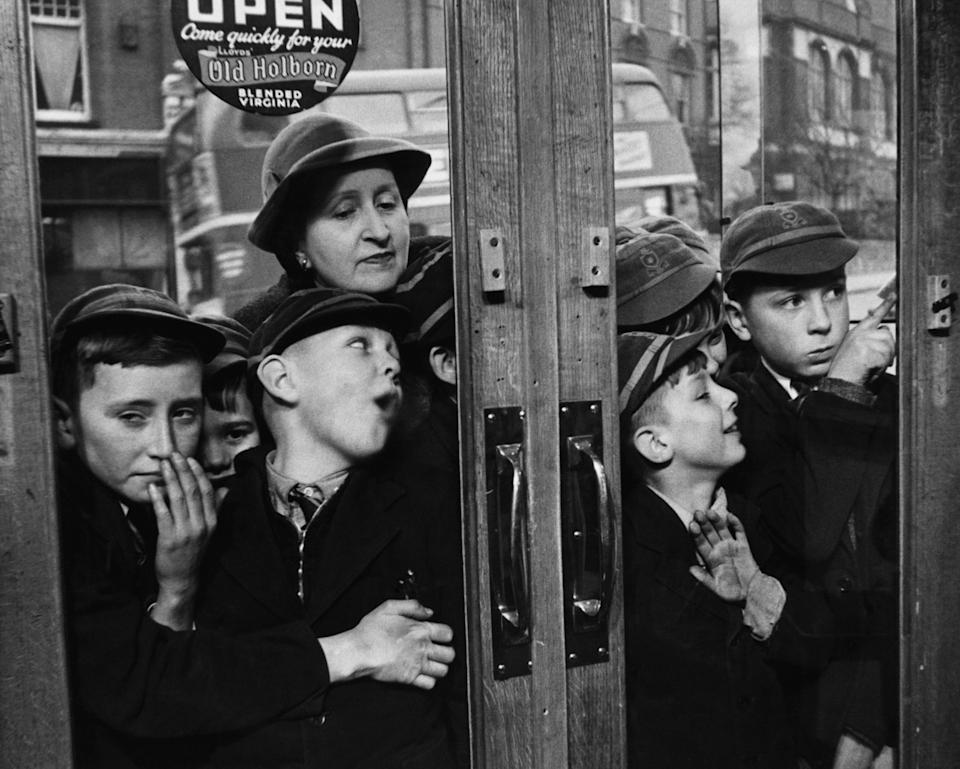

Sugar, sweets and chocolate were all rationed from 26 July 1942 when people had a weekly ration of just two ounces (57g) of sweets or chocolate. This changed over time with sweet rationing ending in 1953. (Getty Images)
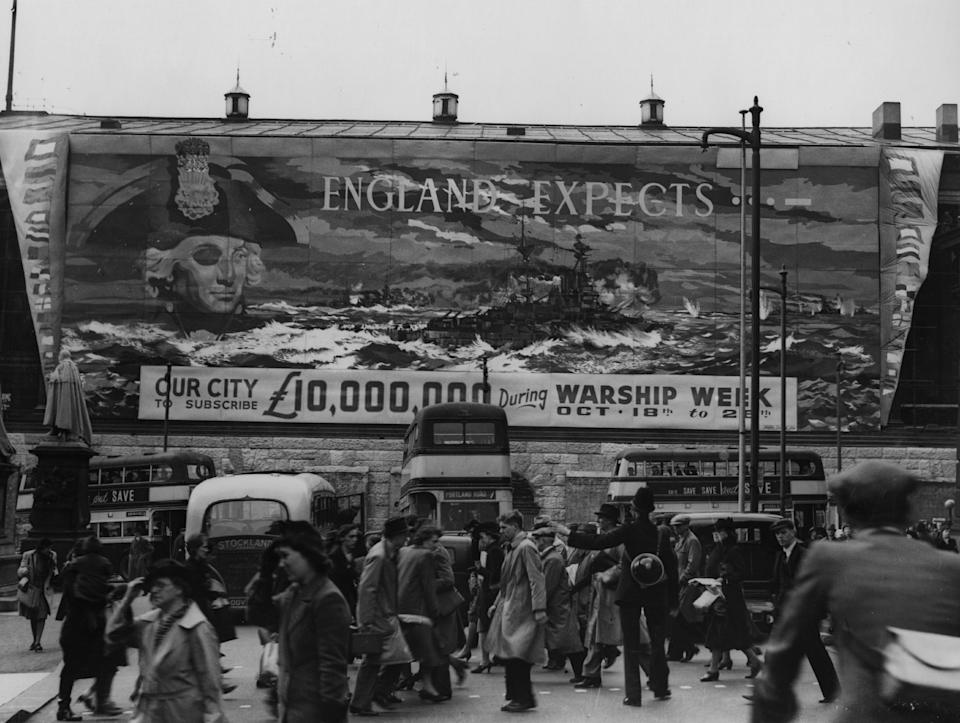

A huge poster, considered to be the largest in the world at the time, covering one side of Birmingham Town Hall, asking the city to raise £10m during Warship Week in order to ‘adopt’ a battleship. (Getty Images)
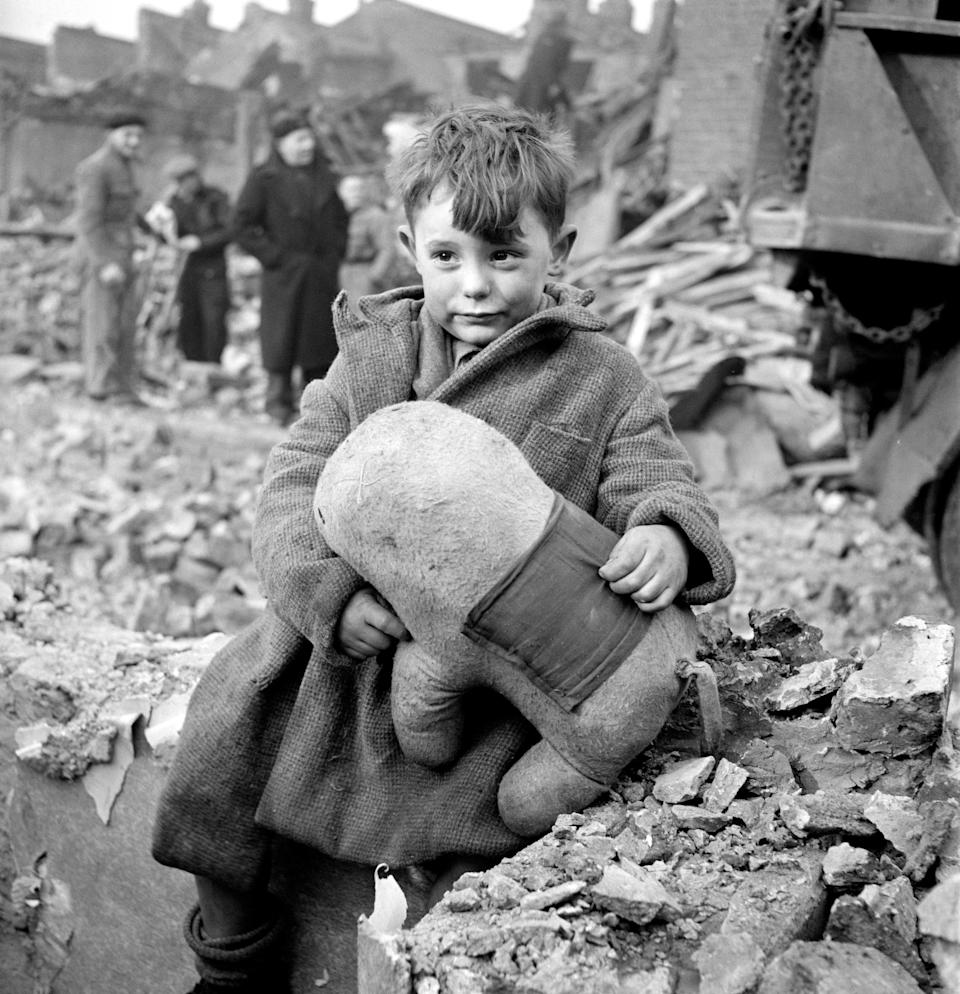

The Blitz had taken a heavy toll on London and it would take years to rebuild many parts of the city. Here a young boy is pictured holding a stuffed toy while sitting by ruins of building during the Second World War bombing of London, in January 1945. (PA/Alamy)
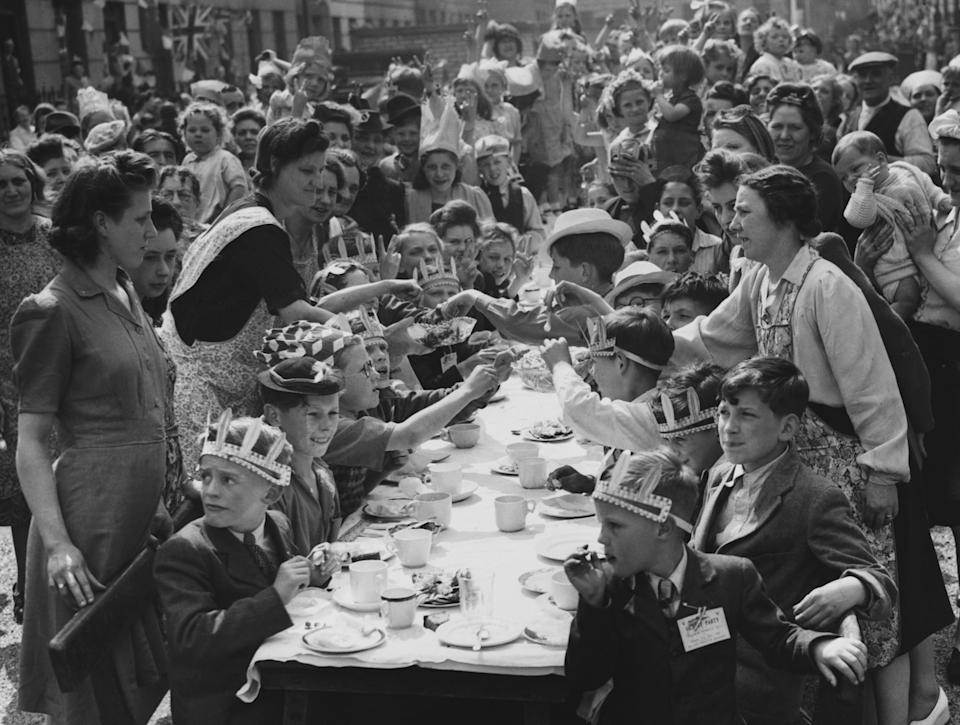

Residents in Islington, north London, have a tea party in the street on 21 May 1945 to celebrate the first Whitsunday (Pentecost) of peacetime. (Getty Images)
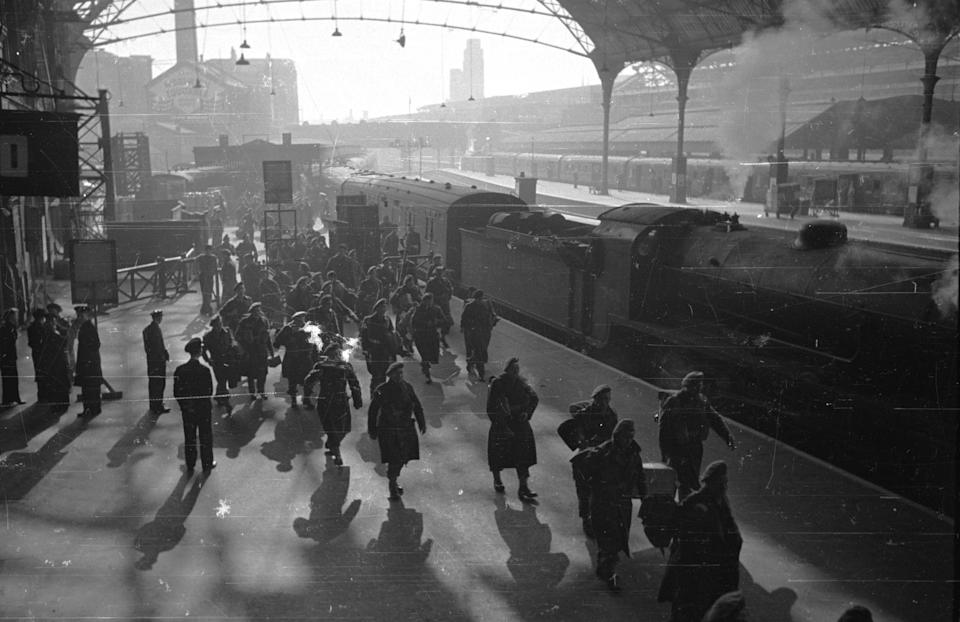

Soldiers returning to their friends and family at a London railway station, on 21 April 1945. Around 4.2m British servicemen and women were demobilised between June 1945 and December 1946, many leaving returned home with injuries, both physical and psychological. (Getty Images)
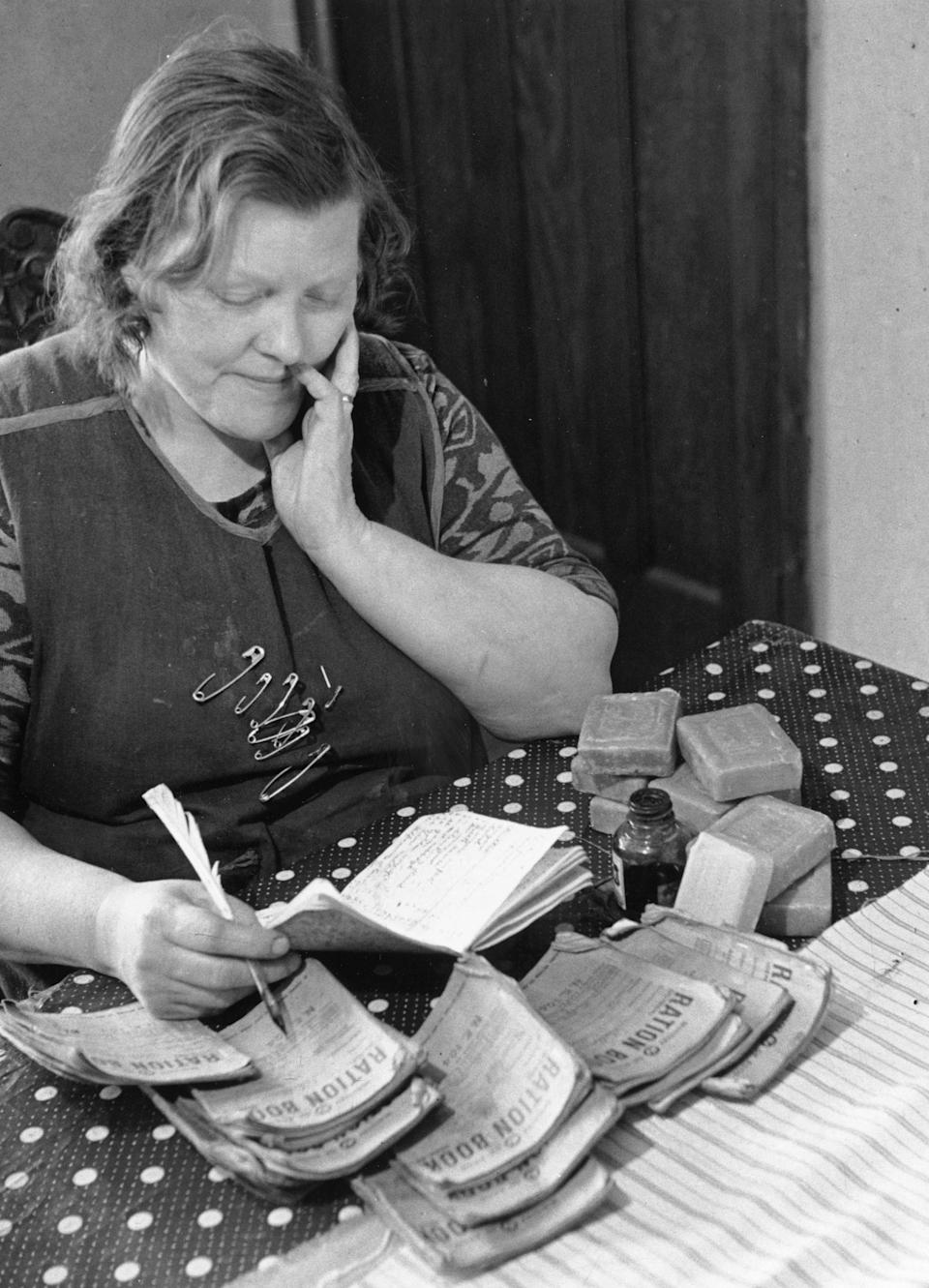

Rationing remained in effect until the 1950s. Here, Mrs Whitman, mother of sixteen, studies the family’s ration books to work out what she can buy. (Getty Images)
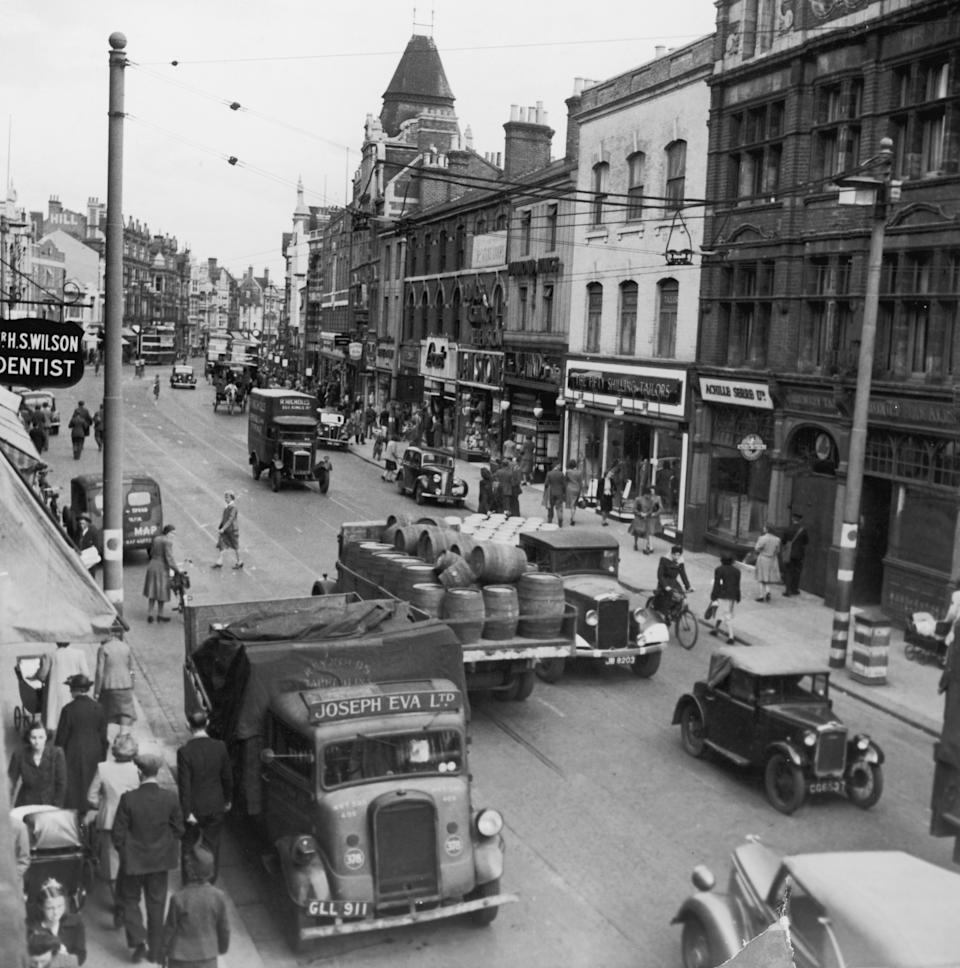

Once the VE Day celebrations were over the country and its people still faced a number of economic challenges with the national debt increasing after the UK spent £7bn, or a quarter of the national wealth, on the war effort. Traffic in a street in Reading, Berkshire, circa 1945. (Getty Images)
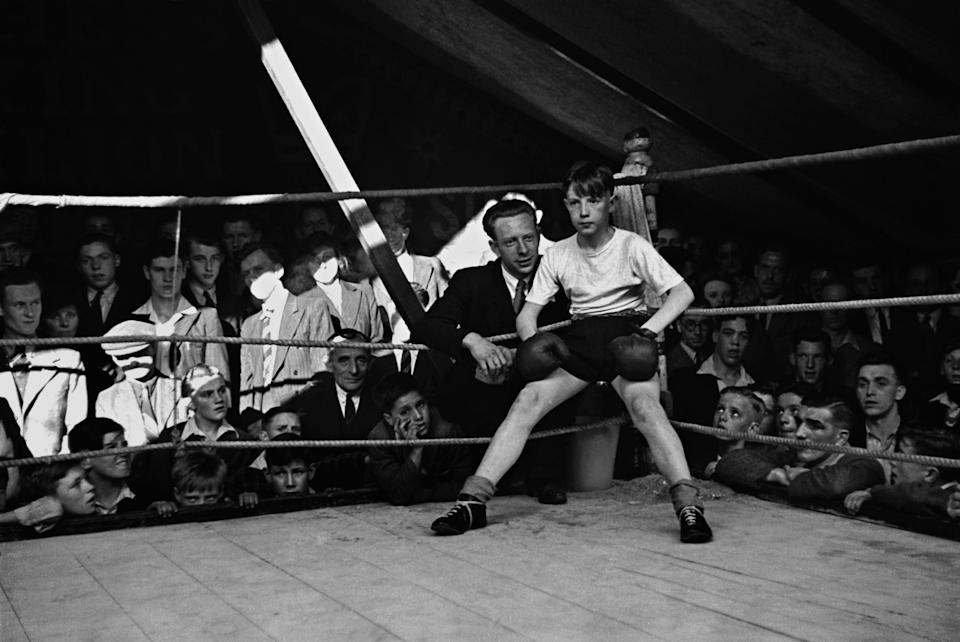

Children’s sport and education suffered during the war, with one in five of the country’s schools damaged by bombing, hundreds being requisitioned by the government and many young teachers and coaches called up to the forces. Here a boxing instructor coaches his young pupil in the Hughes of London boxing pavillion at a Lancashire fair, in 1945. (Getty Images)
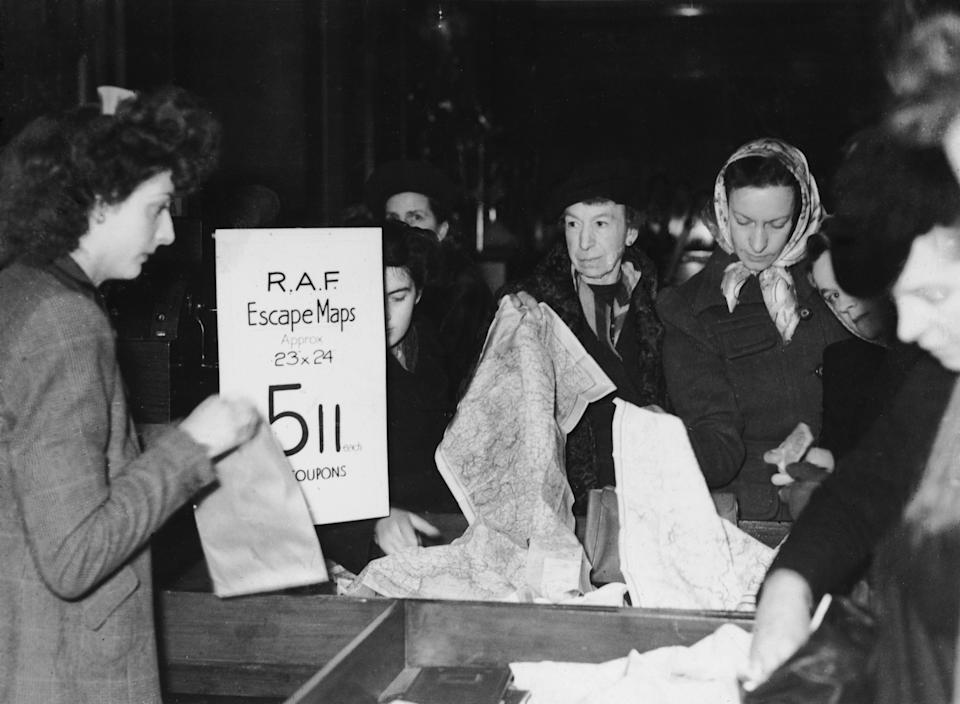

Post-war Britons struggled financially as the economy recovered. Here, women buy scarves recycled from RAF escape maps in a London shop in December 1945. (Getty Images)
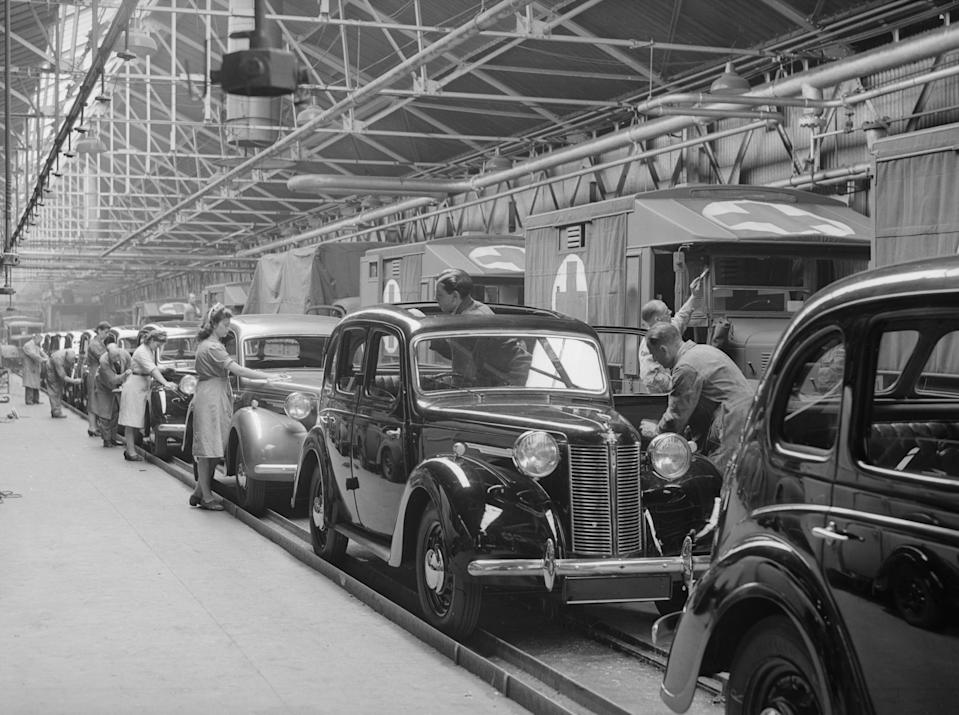

A row of army ambulances still being manufactured at the Austin factory in Birmingham, on 11 August 1945. But beside them are a line of new post-war 10 horsepower Austin cars for civilian use. Car factories like Longbridge, in Birmingham, were crucial during the Second World War, shifting production from civilian vehicles to military vehicles and ambulances. (Getty Images)
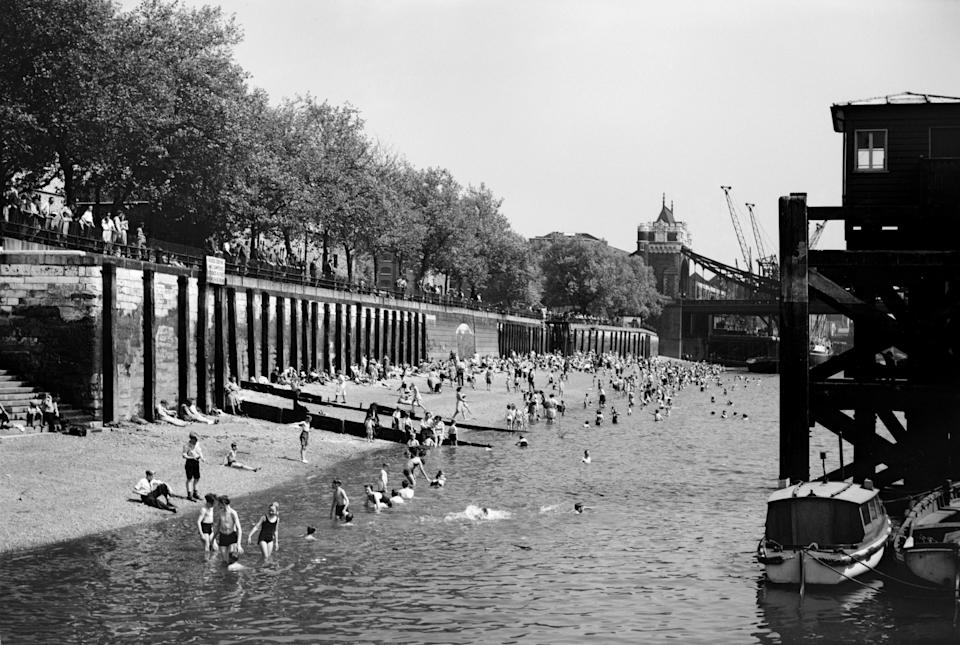

Bathers at Tower Beach in London. (Getty)
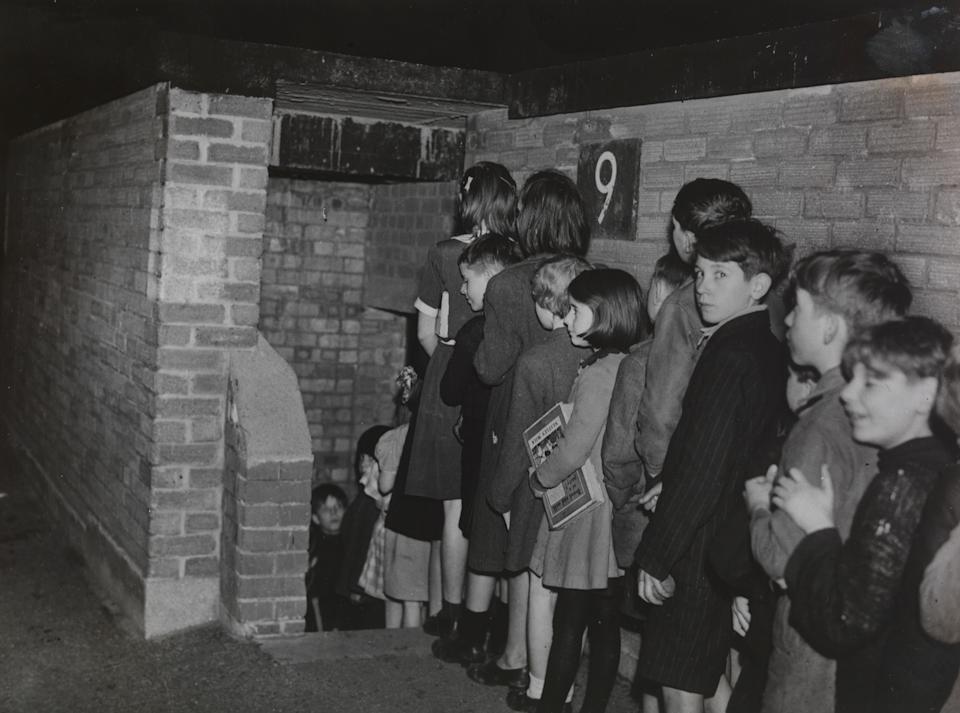

Children in Brixton, south London, visit a public library located in their air-raid shelter. (Getty Images)
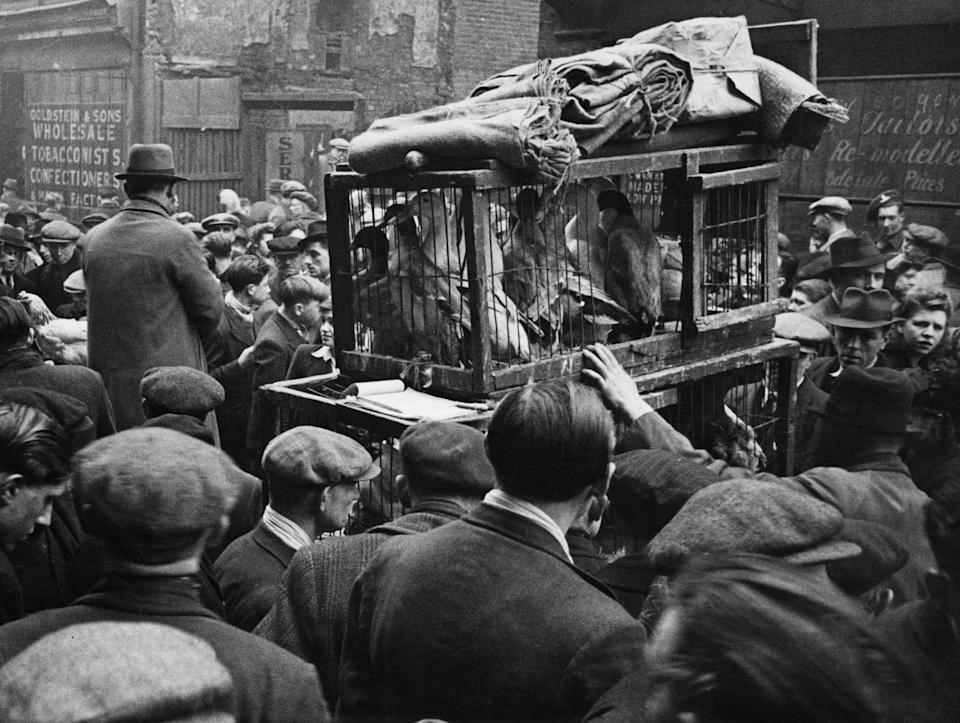

An east London small holders restocking sale in February 1945, where punters bought rabbits, chicks, hens and goats for their spring restocking. Many are keen judges of the livestock offered and much bargaining is done. Many who have surplus birds and animals bring them along for sale or exchange. (Getty Images)
How did Britain celebrate VE Day in May 1945?
Thankful to see the end of conflict in Europe, Brits took to the streets in their millions on Tuesday, 8 May 1945.
Spontaneous celebrations were held on local roads and famously in Trafalgar Square and at Buckingham Palace, where the Royal Family joined the estimated 100,000 revellers from the balcony.
Around the country, 42 million Brits revelled in impromptu street parties that took place with homes decorated with Union Jack flags and bunting bought without having to use ration coupons.
The UK had lost an estimated 384,000 military personnel in combat and had 70,000 civilian deaths, with some forces still fighting in Asia until August.
In Manchester, thousands of jubilant people gathered in Albert Square to listen to the prime minister’s address, while in Liverpool, Castle Street was packed with crowds who were addressed by the city’s lord mayor.
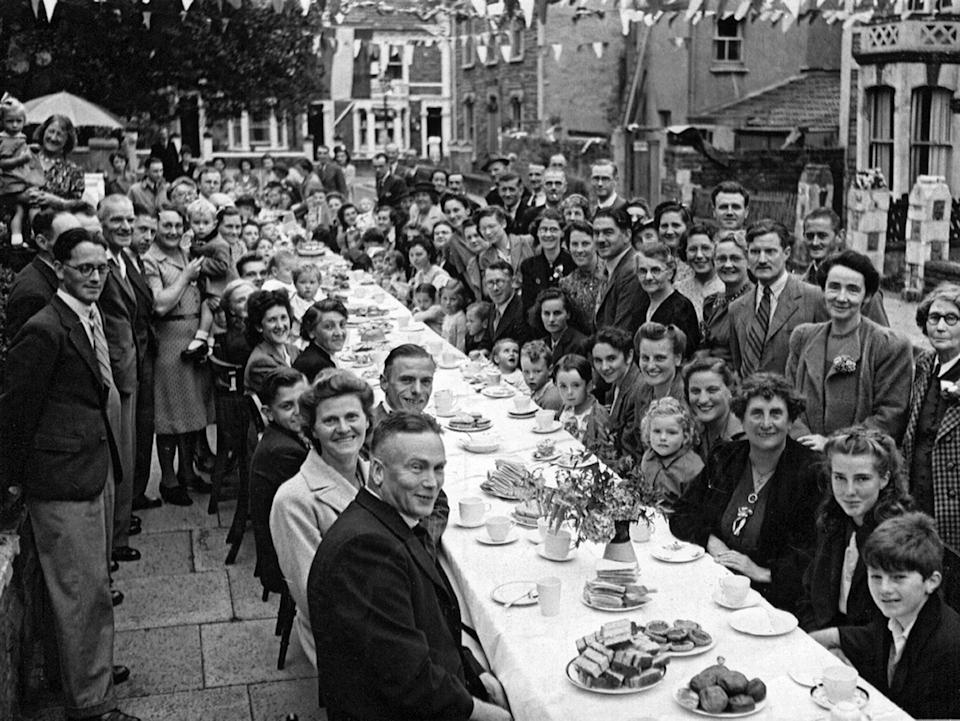

Impromptu tea parties sprung up across the country in celebration on 8 May, like this party pictured in Bristol. The south-west English city was targeted by the Nazi German Luftwaffe multiple times during the Second World War, most devastatingly during the Bristol Blitz of 1940 and 1941.
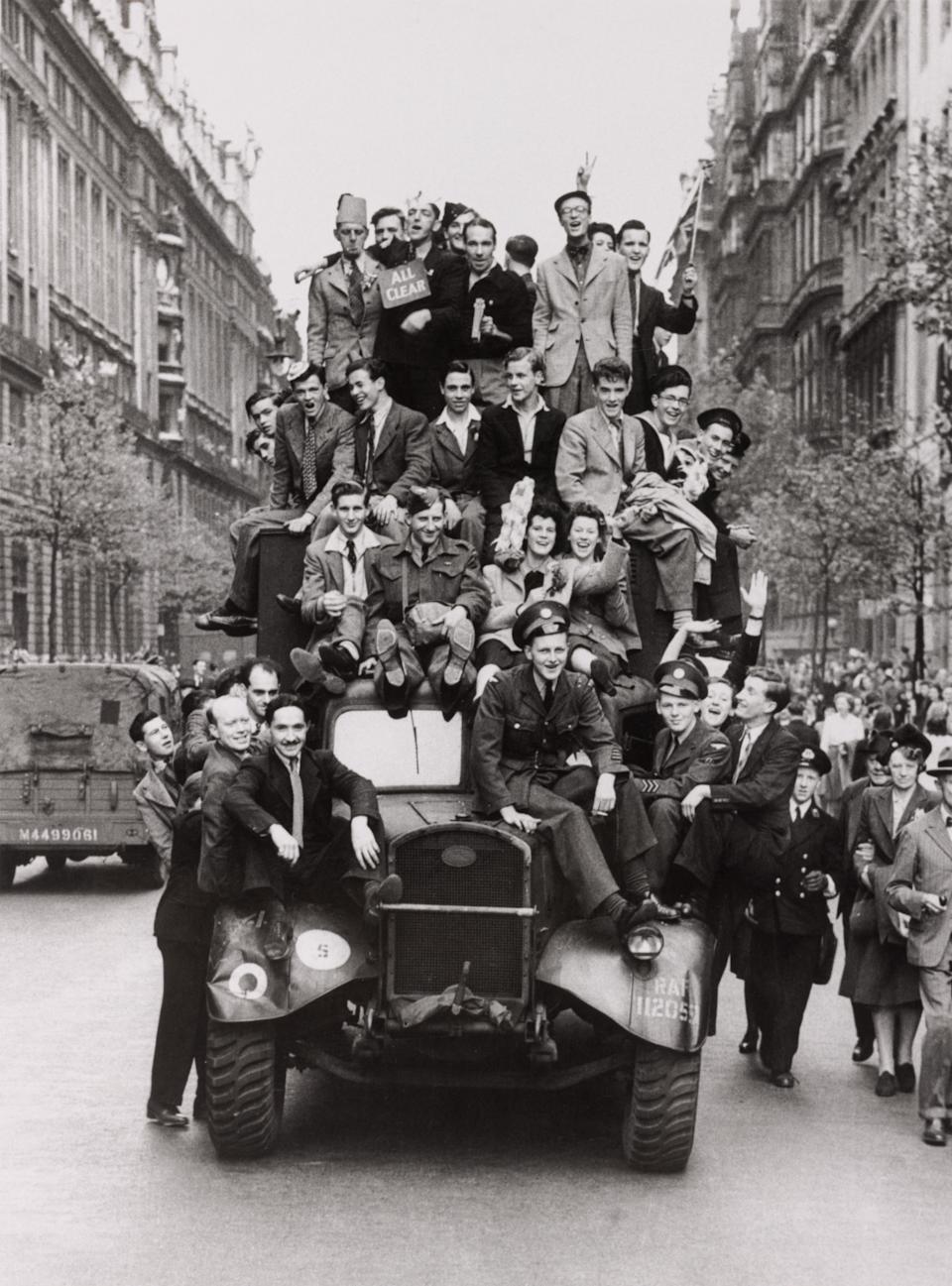

The jubilation and relief spilt over into the street with an estimated one million heading to central London to join the celebrations. This crowd was pictured swarming all over a lorry on VE Day in the capital. (Getty Images)
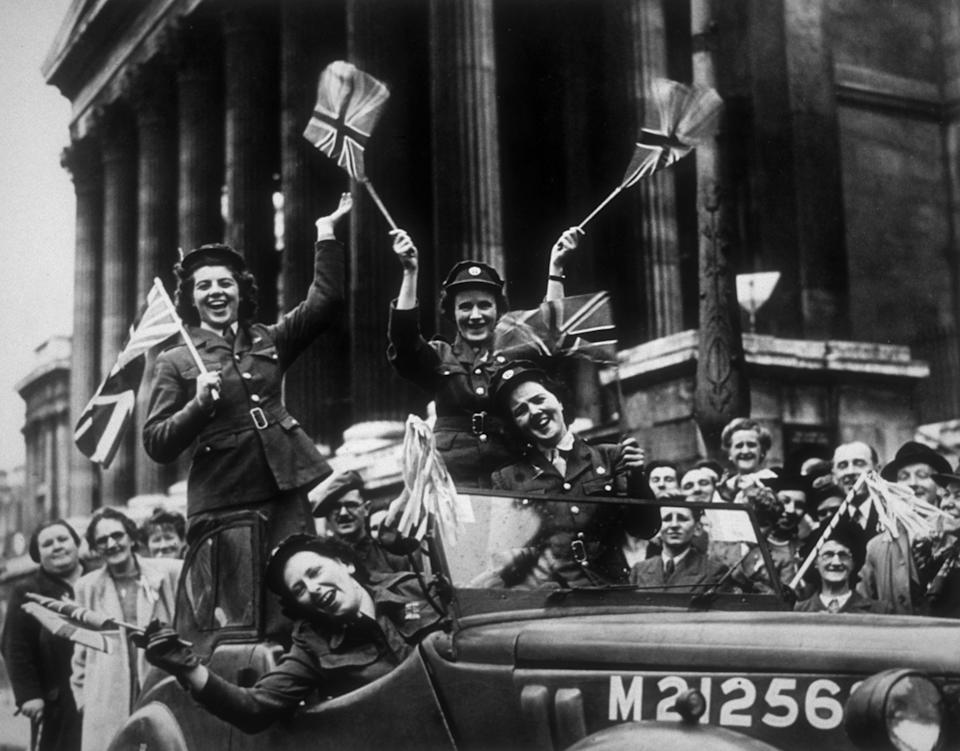

Members of the Auxiliary Territorial Service (ATS) are pictured here driving through Trafalgar Square in a service vehicle during the VE Day celebrations in London. The ATS was the women’s branch of the British Army and whilst initially limited to roles such as cooks, clerks, storekeepers and drivers by 1943, about 56,000 women were serving with anti-aircraft units. (Getty Images)
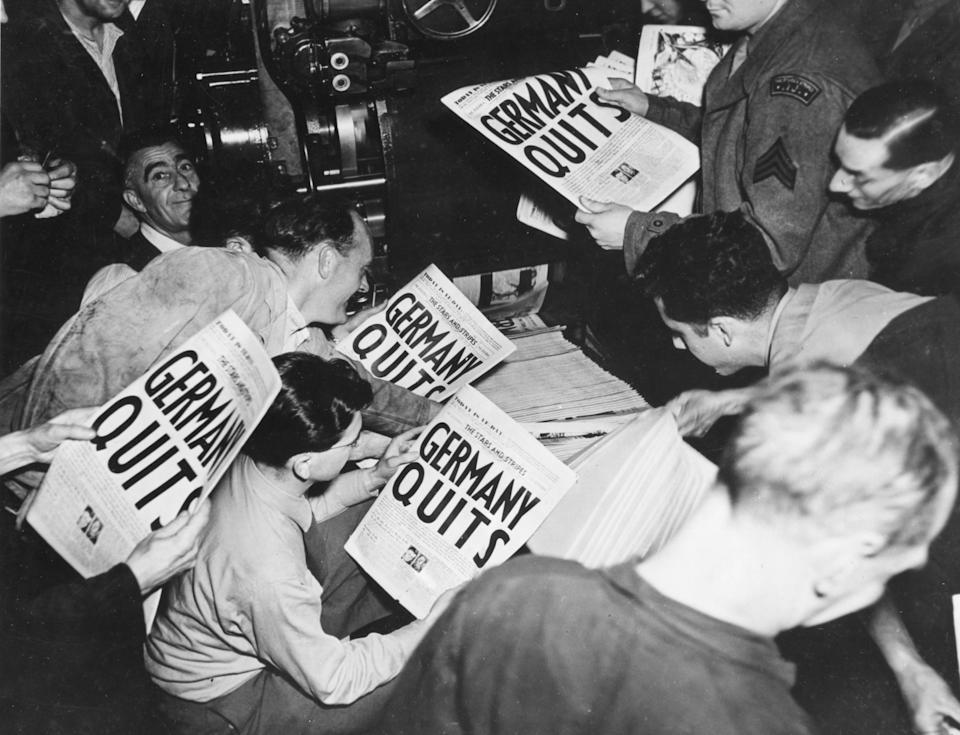

Allied soldiers and others read copies of the hot-off-the-press Stars and Stripes military newspaper, announcing Germany’s surrender, in London on 7 May 7 1945. The news was announced by radio newsflash that day, before celebrations began on 8 May. (Getty Images)
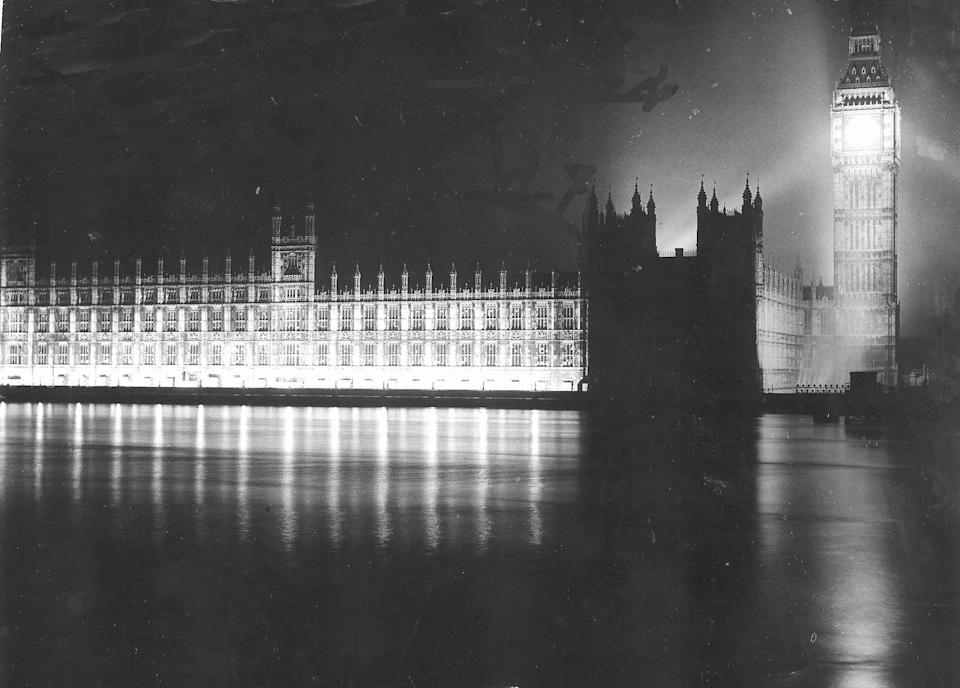

Lights atop the Palace of Westminster, including the Ayrton Light on Big Ben, were turned off to aid in the blackout regulations during the Second World War. Here the lights can be seen going back on at the during the VE Day celebrations in May 1945. (PA/Alamy)
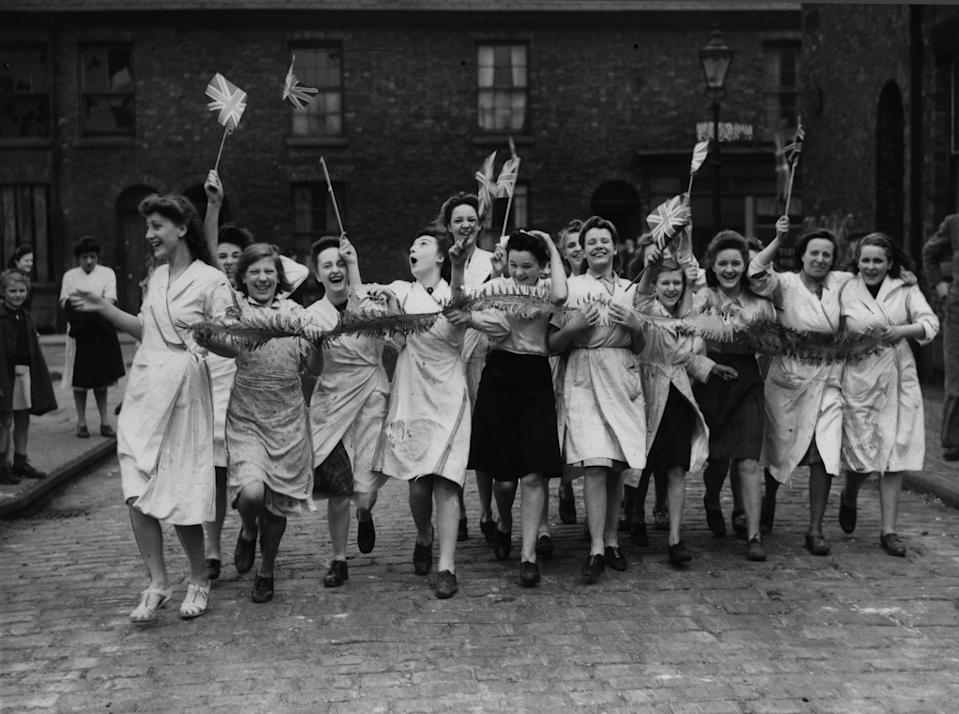

Work patterns changed hugely during the war years with many women stepping into occupations typically held by men. Here woman celebrate VE Day in Manchester on 8 May 1945. (PA/Alamy)
Huge crowds gathered in George Square in Glasgow to sing and dance, and in Cardiff ration coupons were pooled to fund parties.
Read more: Town criers to lead more than 300 regional VE Day celebrations
Anticipation was high after a news flash interrupted regular radio programming on the evening of 7 May, announcing that prime minister Winston Churchill would brief the nation and a national holiday was declared for the following day.
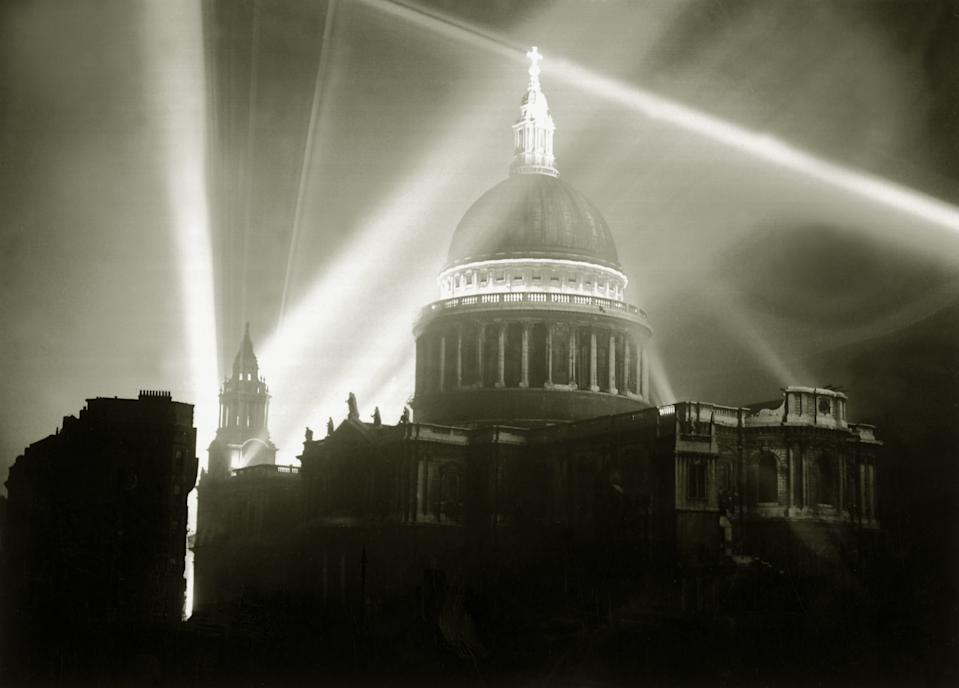

St Paul’s Cathedral survived two direct hits during the Second World War. The first bomb exploded at the east end of the building in October 1940, and another over the North Transept in April 1941. Here the UK’s most famous cathedral is floodlit during the VE Day celebrations on 8 May 1945. (Mirrorpix)
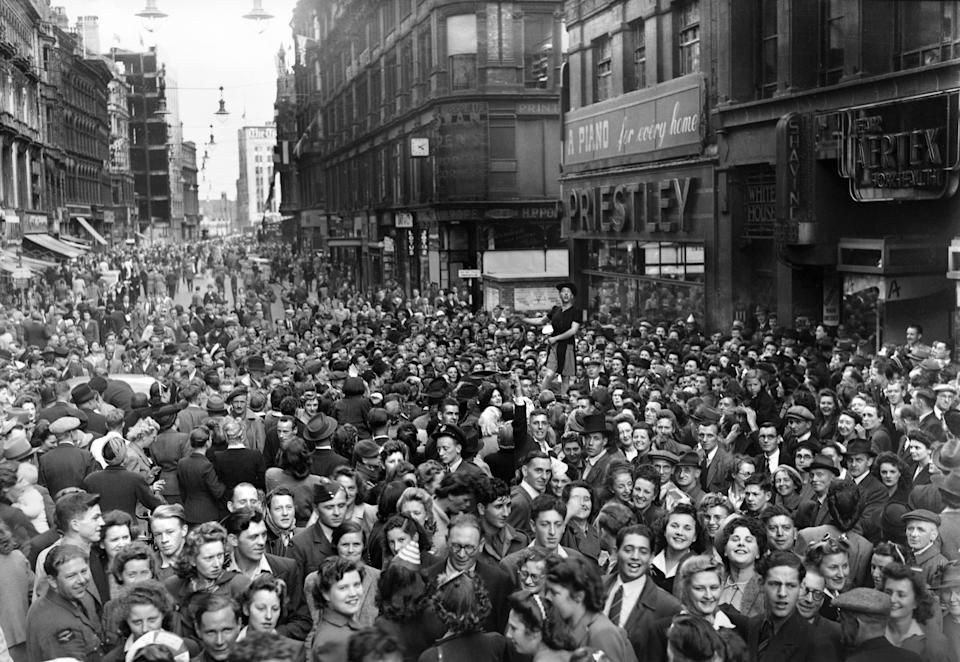

Victory celebrations in central Birmingham on 15 May 1945. The city, a major industrial hub during the Second World War, arranged for a parade a week after VE Day. (Getty Images)
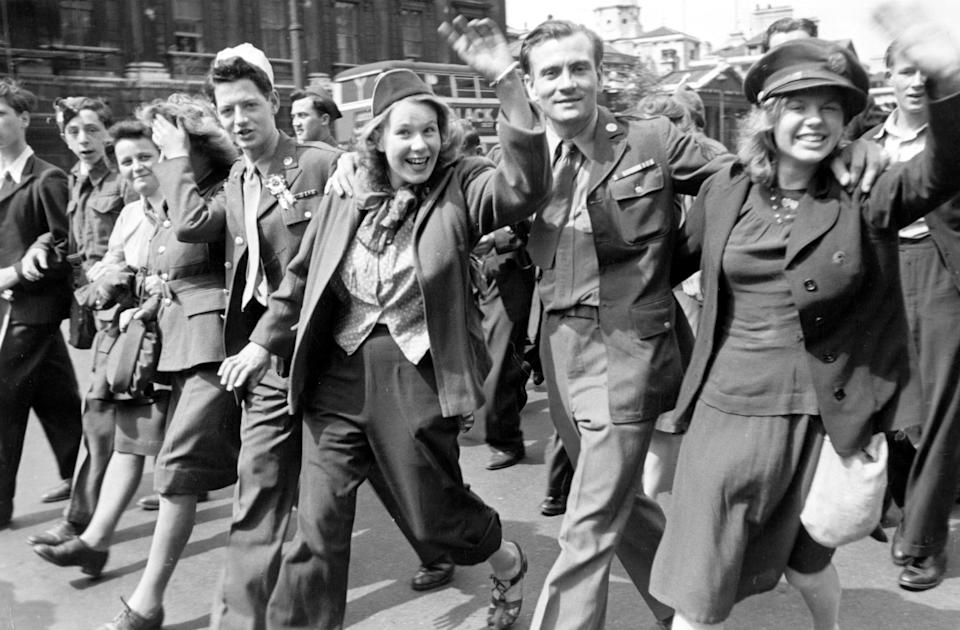

A happy group of revellers march down a London street on VE Day. London suffered heavily during bombing raids and revellers were only too keen to sing and dance together, joining conga lines in the streets, while strangers hugged and kissed. (Getty Images)
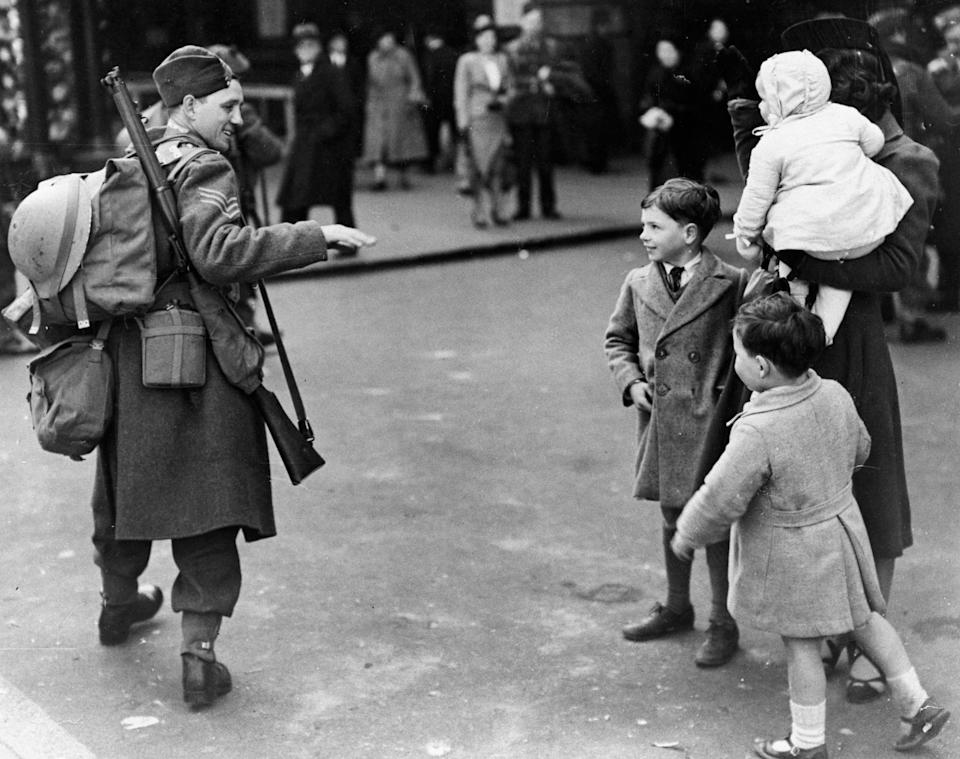

An Australian solider during VE Day celebrations on 8 May 1945. Many Australian soldiers served in the defence of Great Britain, including military personnel with the Australian Army, Royal Australian Navy, and Royal Australian Air Force. (Getty Images)
The next day, Churchill made a rousing radio broadcast from Downing Street, officially announcing the end of the war in Europe, before making his way to Buckingham Palace.
During the speech, repeated by actor Timothy Spall during the 80th anniversary celebrations in London on Monday, he told Brits: “This is not victory of a party or of any class. It’s a victory of the great British nation as a whole.”
As London danced and cheered, King George VI gave a speech, broadcast from bomb-scarred Buckingham Palace, thanking those “who bore arms so valiantly on land and sea, or in the air, and all civilians who, shouldering their many burdens, have carried them unflinchingly without complaint”.
Princess Elizabeth, the future Queen Elizabeth II, and her sister also Princess Margaret left the palace and walked incognito among the crowds to take part in the celebrations.
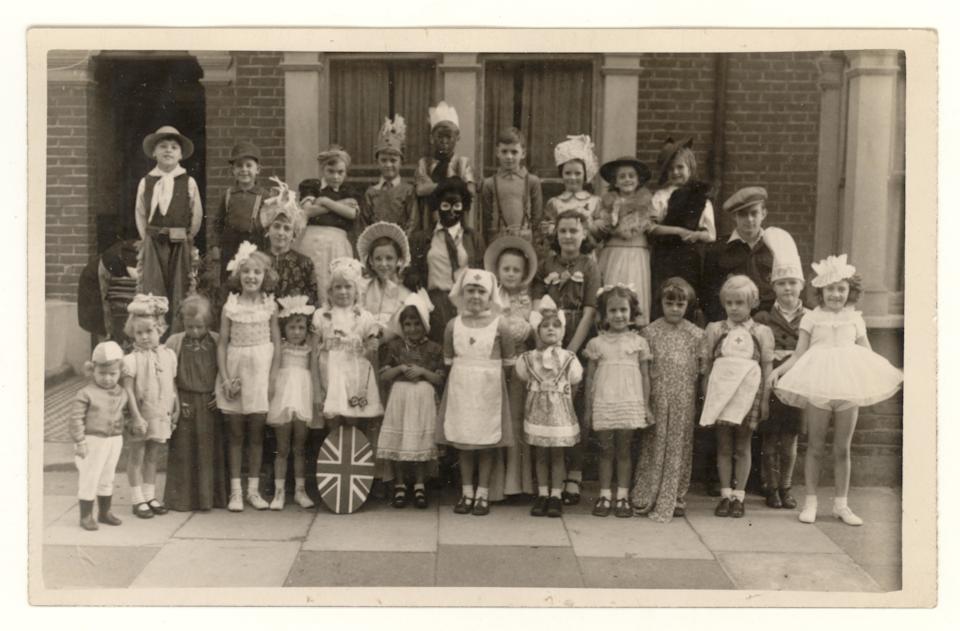

A postcard of a children’s VE Day party held in Cornwall Grove, Chiswick, London, on 8 May 1945. The parties were often held in streets and roads, with these postcards produced afterwards in commemoration of VE Day. (PA/Alamy)
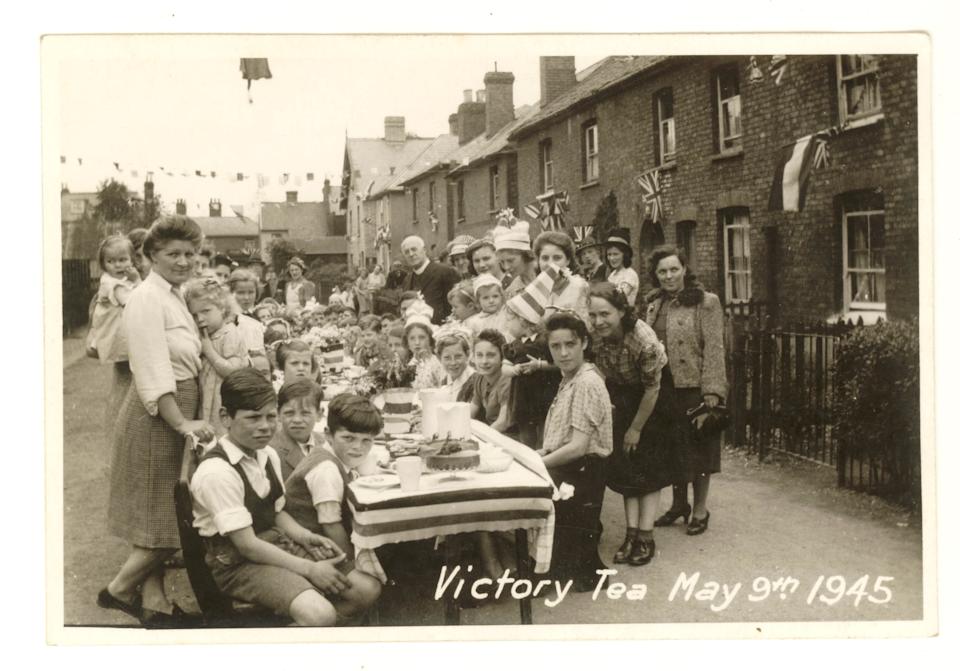

Pictured is an original VE Day postcard of tea party in Stanstead Abbotts, East Hertfordshire. Many houses displayed bunting and flags in a wave of patriotism after the war ended. (PA/Alamy)
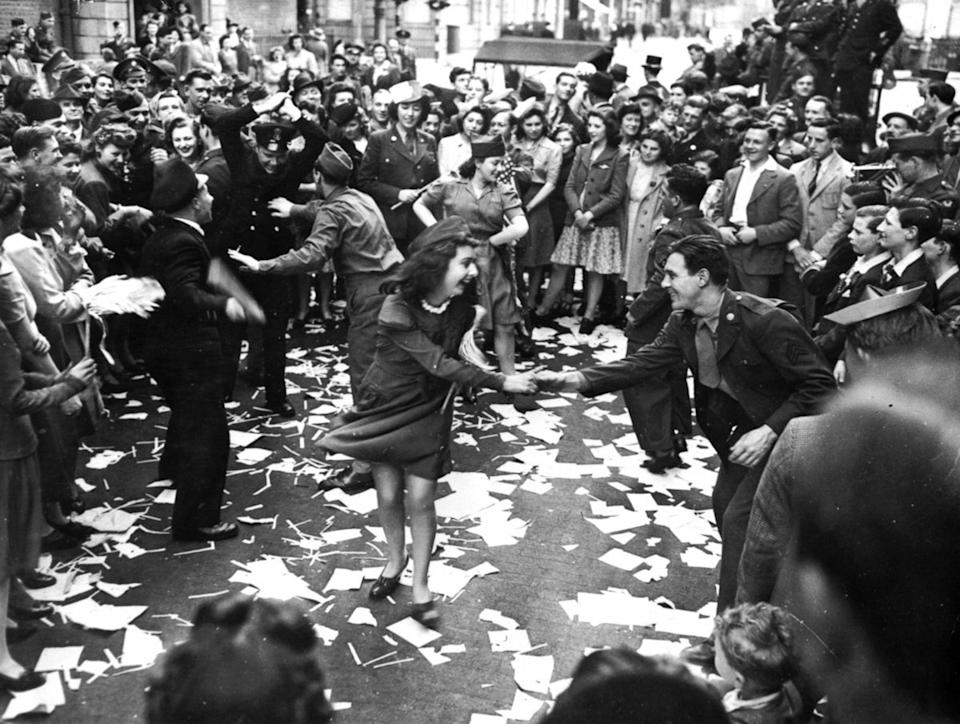

Millions of people rejoiced after hearing of the German surrender, relieved that the war was finally over. Here jubilant people are dancing in the streets on VE Day on the 8 May 1945. (PA/Alamy)
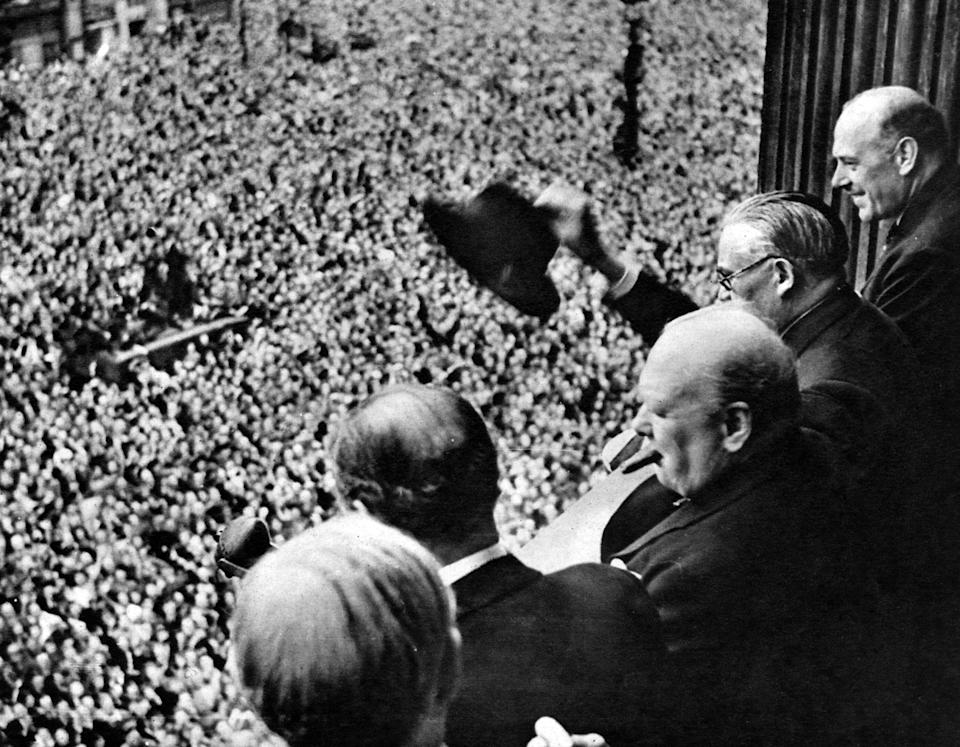

The vast crowd outside the Ministry of Health, where PM Winston Churchill and his war cabinet members waved to the cheering thousands. (PA/Alamy)


Crowds of people also turned out to celebrate VJ Day (Victory over Japan Day), with some climbing on the Victoria Memorial on The Mall outside Buckingham Palace in Westminster, London, on 15 August 1945. VJ Day is the day Imperial Japan surrendered, bringing the Second World War to an end. (Getty Images)
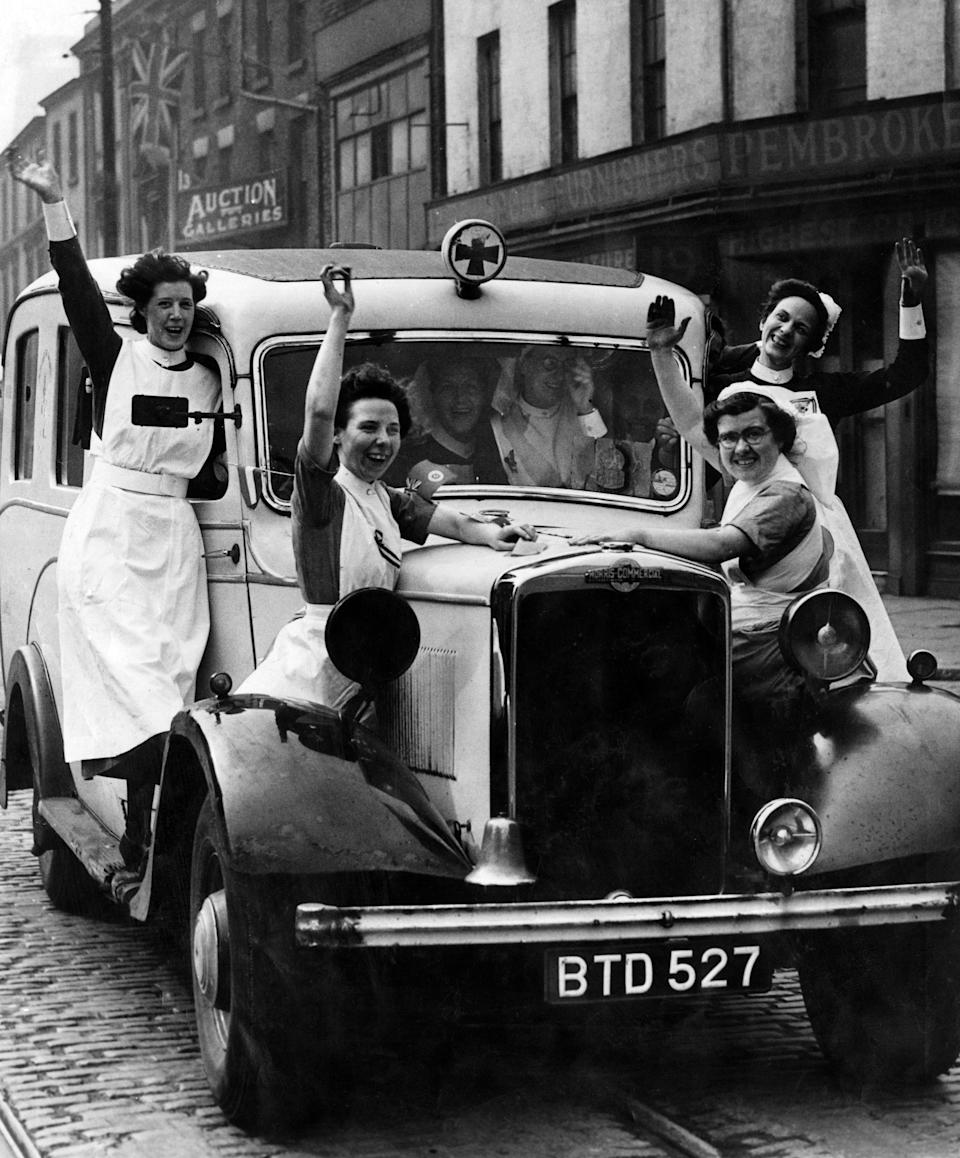

Pictured are jubilant nurses celebrating VE Day in Liverpool on 8 May 1945. Thousands of Liverpudlians headed to Castle Street who were addressed by the Lord Mayor of Liverpool. (PA/Alamy)
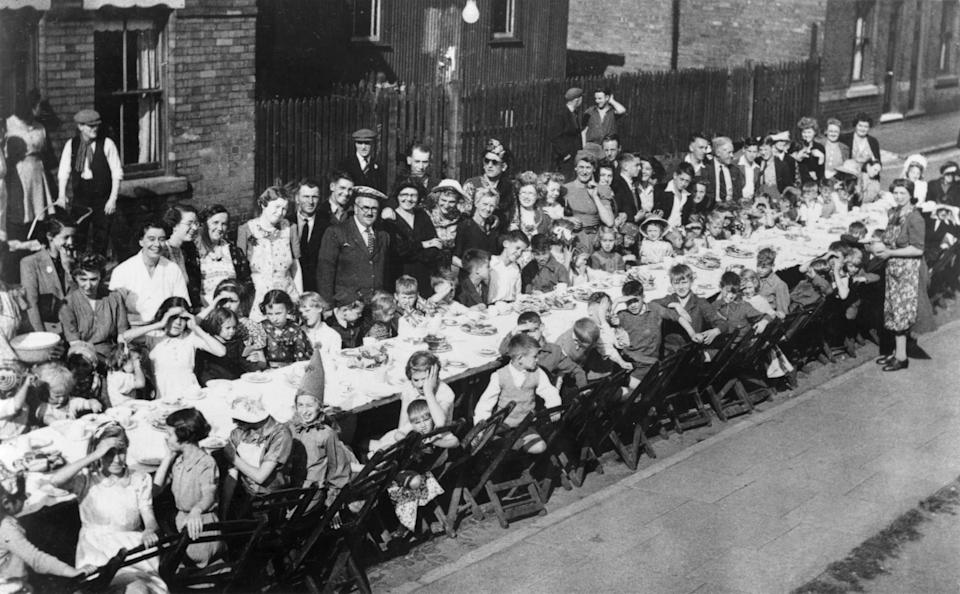

VE Day was declared a public holiday on 7 May by radio broadcast, so many families and neighbours arranged spontaneous parties like this one pictured in Dunstan Street, Netherfield, Nottinghamshire, May 1945. (PA/Alamy)
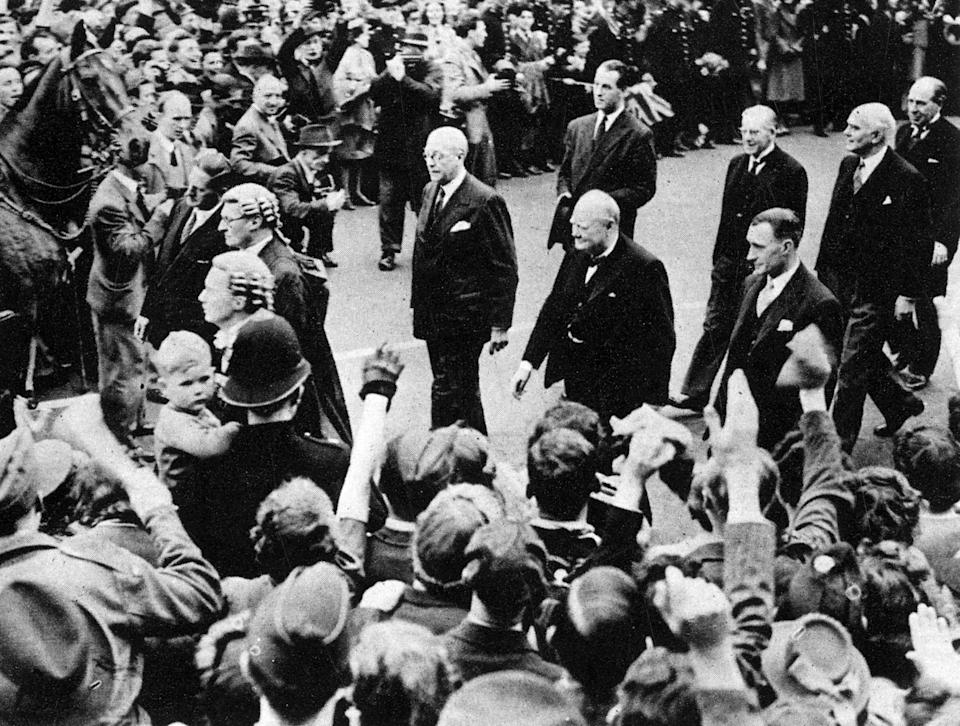

On VE Day, PM Winston Churchill and members of the House of Commons informally attended a Thanksgiving Service at St Margaret’s Church, London, England, amid cheering crowds. (PA/Alamy)
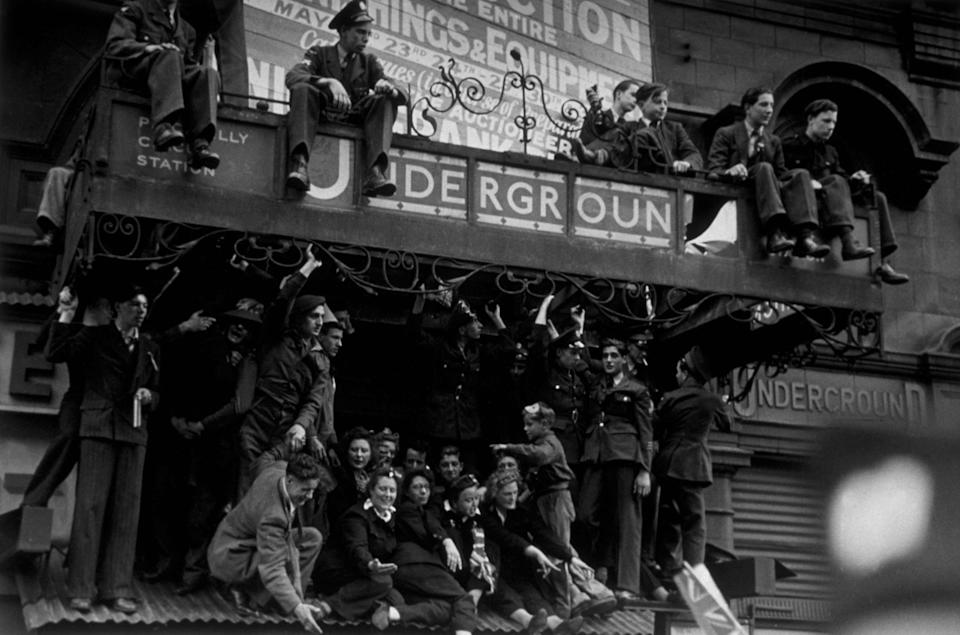

Soldiers and civilians sitting on the roof at the entrance to Piccadilly Circus tube Station, watching the VE celebrations on 8 May 1945. While the war against Japan was still to be won, attention also turned to the challenges of the peace, and the return home of millions of British soldiers. (Getty Images)
